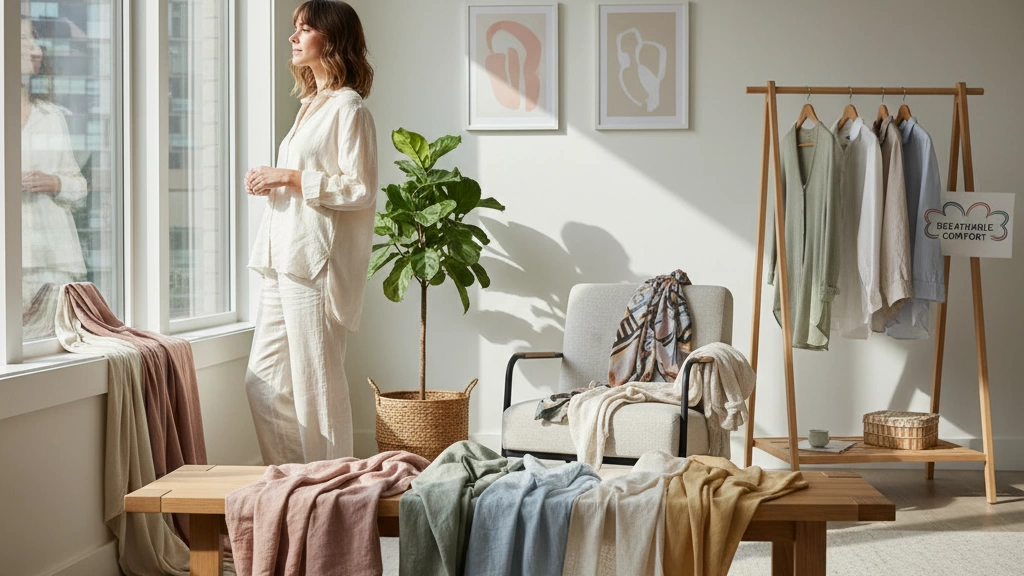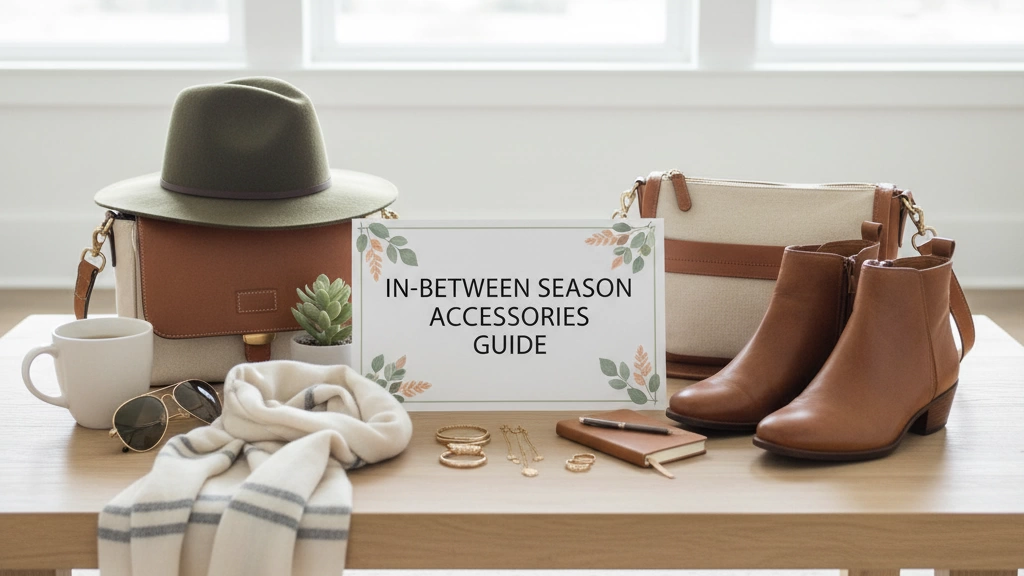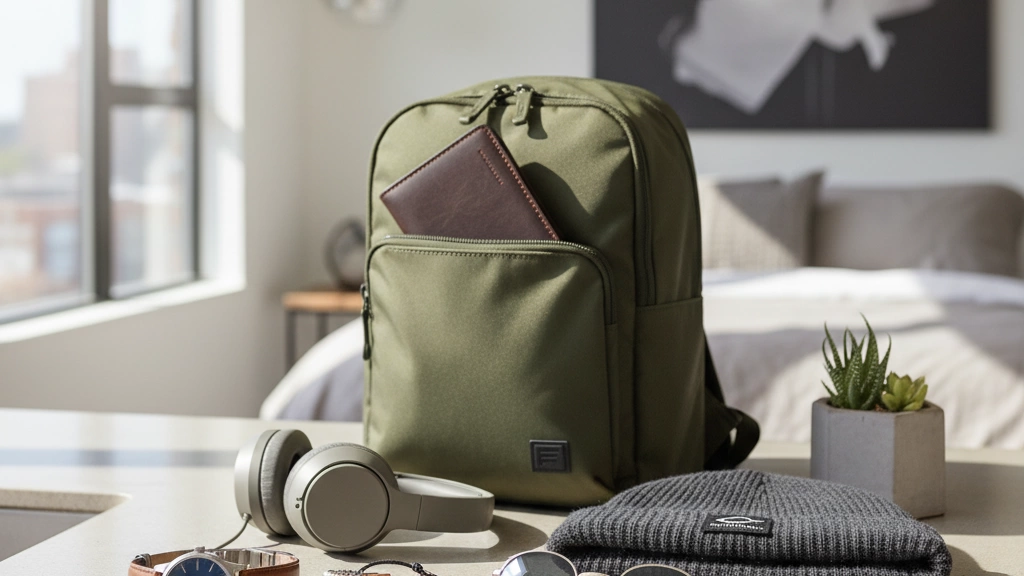Understand Your Local “In-Between” Micro-Season
Before you dive into transitional season outfits, it’s crucial to get a grip on your city’s unique in-between weather. Shoulder seasons—often spring and autumn—are unpredictable, with temperatures swinging wildly between morning chills, midday warmth, and cooler evenings. Knowing these shifts helps you plan your layering clothes for unpredictable weather without sweating or freezing.
Here’s the lowdown: most cities experience a “micro-season” where you’ll need a flexible wardrobe. For example:
| City | Oct/Nov Temp Range (°C) | Mar/Apr Temp Range (°C) |
|---|---|---|
| London | 8°C to 15°C | 7°C to 16°C |
| New York | 7°C to 17°C | 5°C to 18°C |
| Paris | 9°C to 14°C | 7°C to 17°C |
| Melbourne | 11°C to 20°C | 12°C to 21°C |
| Seattle | 8°C to 14°C | 7°C to 15°C |
Notice the ups and downs? Mornings and evenings often start cool, climbing to mild or even warm afternoons. This rollercoaster of temps means you need outfits that work for what to wear in 10-20 degree weather—aka classic transitional season dressing. Think jackets you can take off mid-afternoon and light layers you can easily add back on.
So, start by checking your local weather patterns—not just the highs and lows but how they change through the day. Once you get this, cracking in-between season dressing becomes less about guessing and more about smart styling.
The Non-Negotiable Transitional Wardrobe Heroes
When it comes to cracking in-between season dressing, certain key pieces become absolute essentials. These wardrobe heroes work hard to keep you comfortable and stylish despite unpredictable shoulder season temperatures.
- Lightweight trench or mac coat: Perfect for sudden showers or chilly breezes, these coats offer weather protection without bulk. They’re a classic layering piece for any transitional season outfit.
- Cardigans, thin knits & shirt jackets (shackets): Versatile and easy to layer, these add just the right amount of warmth. A well-chosen shacket, in particular, is a trendy alternative to heavier jackets and works well over tees or turtlenecks.
- Denim jackets & leather jackets: Both provide style and practicality—denim jackets are great for mild days, while a leather jacket offers a bit more wind resistance without feeling too heavy.
- Scarves (wool, cotton, silk): Scarves aren’t just accessories; they add warmth, texture, and color to your look. Choose wool for chillier days, cotton or silk when it’s milder.
- Closed shoes you can wear with or without socks: Think loafers, ankle boots, or sleek sneakers. These shoes are flexible for fluctuating temps and can easily pivot from morning chill to midday warmth.
- Long-sleeve tees & tissue turtlenecks: These lightweight base layers are great for layering or wearing on their own during milder moments. Tissue turtlenecks particularly shine for keeping the neck warm without overheating.
Building your transitional wardrobe around these essentials helps you master layering clothes for unpredictable weather. For more ideas on stylish autumn transitional jackets, check out the top picks for layering here.
Master the Art of Layering (The 3-Layer System)
Nailing transitional season outfits comes down to mastering the three-layer system. This is the secret to dressing for those unpredictable shoulder season days when temperatures swing from cool mornings to warmer afternoons, then dip again by evening.
- Base layer: Start with a breathable, moisture-wicking fabric like merino wool or cotton-modal. This keeps you comfortable by managing sweat and preventing chills without feeling bulky.
- Mid layer: Add warmth with lightweight knits, thin sweaters, or shirt jackets (shackets). The mid layer should trap heat but stay slim enough to layer easily.
- Outer layer: Your final piece offers weather protection and style—think lightweight trench coats, denim jackets, or sleek leather jackets that shield from wind and light rain while completing your look.
This system allows you to adjust quickly throughout the day by adding or removing layers, so you never overheat or freeze. If you want to explore more detailed tips on layering clothes stylishly, check out this mastering the art of layering guide for inspiration.
Visualizing this with a simple diagram helps too: base layer closest to skin, mid layer for warmth, and outer layer as your shield against the weather and style statement.
12 Foolproof Outfit Formulas for Fluctuating Weather
Navigating in-between season dressing means relying on outfit combos that adapt easily to changing temperatures. Here are 12 easy formulas perfect for shoulder season weather swings:
-
White shirt + thin sweater + lightweight trench + loafers
Classic and polished, this look works well for mild days with cooler mornings and evenings.
-
T-shirt + open button-down + blazer + jeans
Layering a shirt over a tee with a structured blazer gives flexible warmth and style. For tips on styling button-downs, check this guide on men’s shirt styling.
-
Midi dress + cardigan + ankle boots + scarf
Ideal for those warmer daylight hours but cooler evenings, this outfit balances comfort with layering.
-
Knit polo + oversized shacket + straight jeans
A knitted polo layered under a shacket is a spring/fall classic that handles unpredictable weather while looking sharp. For knit polo inspiration, see our knitted polo styling advice.
-
Turtleneck + slip skirt + denim jacket
This mix keeps you cozy with the turtleneck and adds casual cool with a denim jacket—great for crisp mornings that warm up.
Other simple go-to combos include:
- Long-sleeve tee + vest + chinos + sneakers
- Button-up shirt + sweater vest + trousers + boots
- Striped tee + utility jacket + denim + loafers
- Lightweight hoodie + trench coat + joggers + minimalist trainers
- Chambray shirt + cardigan + black jeans + ankle boots
- Silk blouse + tailored blazer + cigarette pants + flats
These outfit formulas emphasize layering and transitional wardrobe essentials, giving you adaptable looks for fluctuating temperatures without overthinking. Keep these combos handy to streamline your morning decisions during spring and fall dressing.
Fabric & Material Guide – What Actually Works

When dressing for those unpredictable in-between seasons, fabric choice matters more than you might think. You want materials that breathe well, keep you comfortable, and layer easily without bulk. Here’s a quick guide on what fabrics work best—and which to avoid.
Best breathable fabrics for shoulder-season outfits:
- Merino wool: Lightweight, breathable, and temperature-regulating—merino wool keeps you warm without overheating, perfect for base layers and thin knits.
- Cotton-modal blends: Soft and breathable with a bit of stretch, these blends are great for long-sleeve tees and casual layering pieces.
- Tencel (Lyocell): Known for moisture-wicking and smooth texture, Tencel fabric is ideal for blouses, shirts, or lightweight dresses.
Fabrics to avoid during transitional weather:
- Heavy wool: While great for winter, thick wool can overheat during fluctuating temperatures.
- Thick fleece: Bulky and not breathable, fleece tends to make layering clunky and uncomfortable in mild weather.
Quick comparison chart:
| Fabric | Breathability | Warmth Level | Ideal Use | Avoid For |
|---|---|---|---|---|
| Merino Wool | High | Moderate | Base & mid layers | Heavy winter wear |
| Cotton-Modal | High | Light | Long-sleeve tees, shirts | Cold wind protection |
| Tencel | High | Light | Shirts, casual dresses | Insulation layers |
| Heavy Wool | Low | High | Winter coats, heavy knits | Mild, fluctuating temps |
| Thick Fleece | Low | High | Winter activewear | Layering in spring/fall |
Choosing the right fabric is key to mastering spring fall dressing and layering clothes for unpredictable weather. With the right materials, your transitional wardrobe essentials will feel comfortable, functional, and stylish all day long. For a quick accessory boost that complements these fabrics, check out our detailed guide on what is a pocket square actually for and how to style small accents in fluctuating temperatures.
The 30-Second Morning Decision Hack
Mornings during in-between seasons can be tricky—fluctuating temps make outfit choices harder. To cut the stress, try the one-week capsule challenge: pick just 10 versatile pieces that mix and match easily to create 20 different outfits. This minimal approach lets you decide what to wear in 30 seconds flat, avoiding overthinking and outfit regrets.
Focus on basics like lightweight trench coats, long-sleeve tees, cardigans, and denim jackets that layer well. Add a few shoes like loafers and ankle boots, then throw in scarves or a shacket for style and warmth. Preparing your outfits ahead gives you a smooth start every day.
For extra help, use a printable checklist to track your pieces and outfit combos. This visual aid ensures you don’t repeat or forget key items and keeps your wardrobe fresh and ready. This method turns fluctuating weather dressing from a hassle into a simple routine.
Common Transitional Dressing Mistakes (And How to Fix Them)

Navigating in-between season dressing comes with its own set of traps. Here are three common mistakes to watch out for—and how to fix them:
- Wearing summer dresses with winter coats: It’s tempting to throw on your heavy coat over a light summer dress when the weather cools down, but this mismatch can look awkward and feel uncomfortable. Instead, layer your summer dress with a cardigan or a denim jacket, then top with a lightweight trench or mac coat for warmth without the bulk.
- Too many bulky layers leading to a frumpy look: Piling on thick sweaters and heavy outerwear can make you look shapeless and weighed down. To avoid this, stick to the three-layer system: a fitted base layer, a slim mid-layer for warmth, and a sleek outer layer. This way, you stay cozy but keep your outfit sharp.
- Forgetting the “third piece” rule: Your outfit isn’t complete without that third element—like a blazer, scarf, or jacket. Skipping this often makes transitional outfit combos look flat or unfinished. Adding a well-chosen third piece not only boosts style but also adds extra warmth and adaptability for fluctuating weather. For ideas on how to layer clothes stylishly and choose your third piece effectively, check out this smart casual layering guide.
Fix these common pitfalls, and you’ll master transitional season outfits that look good and feel comfortable all day long.
Accessories That Save the Day

When you\’re cracking in-between season dressing, the right accessories can make all the difference. Lightweight scarves and pashminas are perfect for adding warmth without bulk. They also bring a stylish finishing touch and can be easily removed as the temperature shifts.
Thin leather gloves are another must-have—slip them into your bag for chilly mornings and evenings, then stash away when it warms up. For bags, crossbody styles win over totes during rainy days since they keep your hands free and your belongings secure.
Top off your outfits with transitional hats like a felt fedora or a baker boy cap. These not only protect against unexpected breezes but also add a smart edge to any shoulder season wardrobe. For more ideas on how accessories define your look, check out this detailed accessories guide that defines British style.
Sustainable & Budget Tips for In-Between Season Dressing
Start by shopping your own closet before buying new pieces. You’d be surprised how many transitional wardrobe essentials are already waiting to be refreshed—think lightweight cardigans, denim jackets, and scarves.
When it comes to second-hand shopping, focus on categories like trench coats, shackets, and quality knitwear. These are timeless, durable items that often come in excellent condition and fit perfectly into your spring fall dressing rotation without breaking the bank.
For smart 2024 investment pieces under $150/£120, look for versatile items like a well-made lightweight trench coat, merino wool base layers, or classic ankle boots. These pieces will serve you season after season, making them both budget-friendly and sustainable in the long run.
For extra style inspiration and ways to elevate your look sustainably, check out this guide to understated elegance that shows how simple accessories can upgrade transitional outfits without extra spending.
Regional Style Guides for In-Between Season Dressing
Dressing for in-between seasons varies a lot depending on where you live. Here’s a quick guide tailored to key regions, helping you navigate those tricky shoulder season outfits with ease.
UK and Australia: Autumn to Winter
In the UK and southern parts of Australia, autumn quickly blends into winter with chilly mornings and milder afternoons. Layer light trench coats or wool-blend jackets over cardigans or merino wool base layers. Add scarves and ankle boots for warmth without bulk. In Australia, be ready for fluctuating temps—think breathable fabrics under a smart shacket or leather jacket for unpredictable weather throughout the day.
European Spring
Spring in Europe usually brings mild days but cool evenings. Go for lightweight trench coats combined with thin knits or shirt jackets. Midi dresses paired with cardigans and sleek sneakers work well for variable weather, while scarves add both style and a little extra warmth. Opt for layering that adapts easily as temperatures shift from 10 to 20 degrees Celsius.
North American Indian Summer
The Indian summer across regions in North America is perfect for transitional wardrobe essentials like denim jackets and long-sleeve tees. Layering is key here—combine breathable base layers with mid-weight outerwear like blazers or lightweight coats. Closed shoes like loafers or ankle boots help bridge the gap between summer sandals and winter boots, maintaining comfort as days cool off.
Monsoon Season (Asia)
During monsoon season, humidity and rain complicate seasonal dressing. Waterproof, lightweight outer layers like thin trench coats or technical shackets are lifesavers. Pair these with moisture-wicking fabrics to stay dry and comfortable. Accessories like crossbody bags protect your essentials better in the rain, and thin scarves or hats shield you without causing overheating. Balancing style and functionality is critical here.
For more on accessories that elevate your transitional looks, check out this detailed guide to always stylish autumn-winter accessories to upgrade your outfits season after season.



